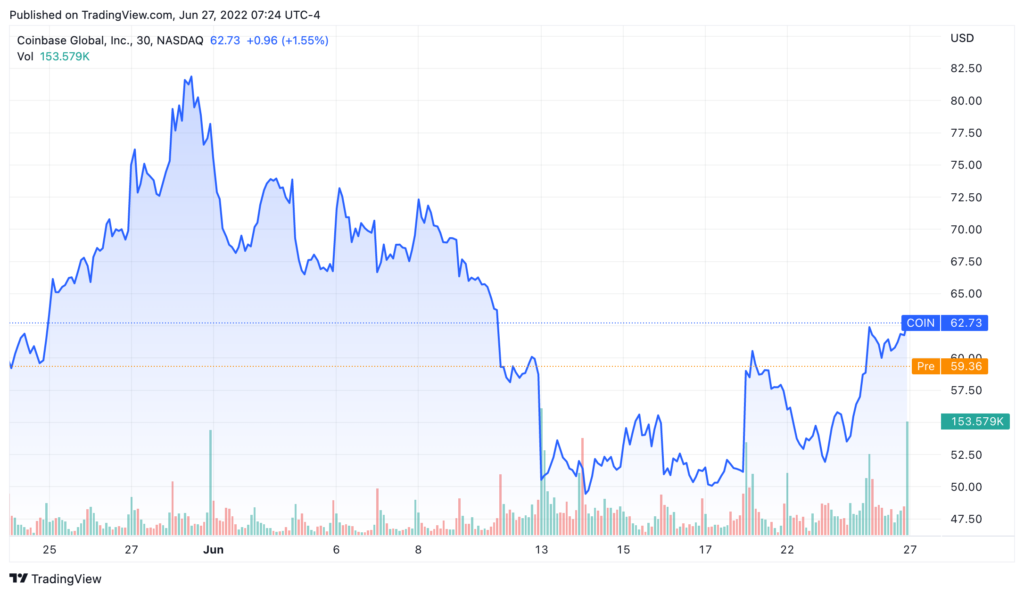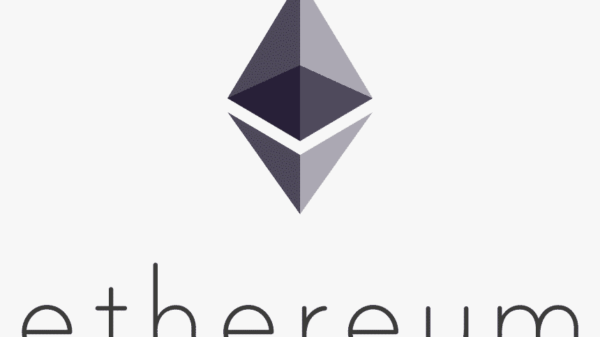QUICK TAKE
- Shares in the US crypto exchange were down 5% in pre-market trading on Monday.
- The investment bank set a price target of $45 for the stock, revised from $70.
Coinbase (COIN) was downgraded from buy to sell by Investment bank Goldman Sachs on Monday, while shares plunged over 5% in pre-market trading.
Goldman Sachs has downgraded Coinbase after several weeks of turbulence for the crypto exchange, setting a revised price target of $45, down from $70.
Shares in Coinbase closed at $62.71 on Friday, up roughly 9% over the week. Yet Coinbase was trading at $59.36 in pre-market today, down 5.34%, at the time of writing according to Nasdaq data via TradingView.

According to Monday’s note the bank expects current cryptocurrency prices and trading volumes to cause “further degradation’ in Coinbase’s revenue base. Plus, analysts are forecasting breakeven to negative adjusted earnings before interest, taxes, depreciation and amortization (EBITDA) — a popular measure of a company’s financial performance — over the next few years.
The downgrade comes just four days after Moody’s downgraded Coinbase’s senior unsecured notes. Moody’s said on Thursday that Coinbase’s Corporate Family Rating (CFR) had been downgraded from a Ba2 to a Ba3, and it guaranteed senior unsecured notes to Ba2 from Ba1.
These announcements came less than two weeks after Coinbase laid off 18%, or approximately 1,100, of its staff. The layoffs were made in preparation for the tougher economic conditions to come and the prospect of a crypto winter.
According to analysts at Goldman, however, these cuts don’t go far enough, as the reduction effort merely brings the company’s headcount back to levels last seen at the end of the first quarter in 2022.
In Monday’s research note, Goldman Sachs analysts concluded that:
“Lastly, we are incrementally more bearish on the competitive environment and the outlook for fee rate compression given the announced merging of the Coinbase and Coinbase Pro platforms, which has the potential to reduce the switching costs and make lower pricing more easily available to its users.”
















































